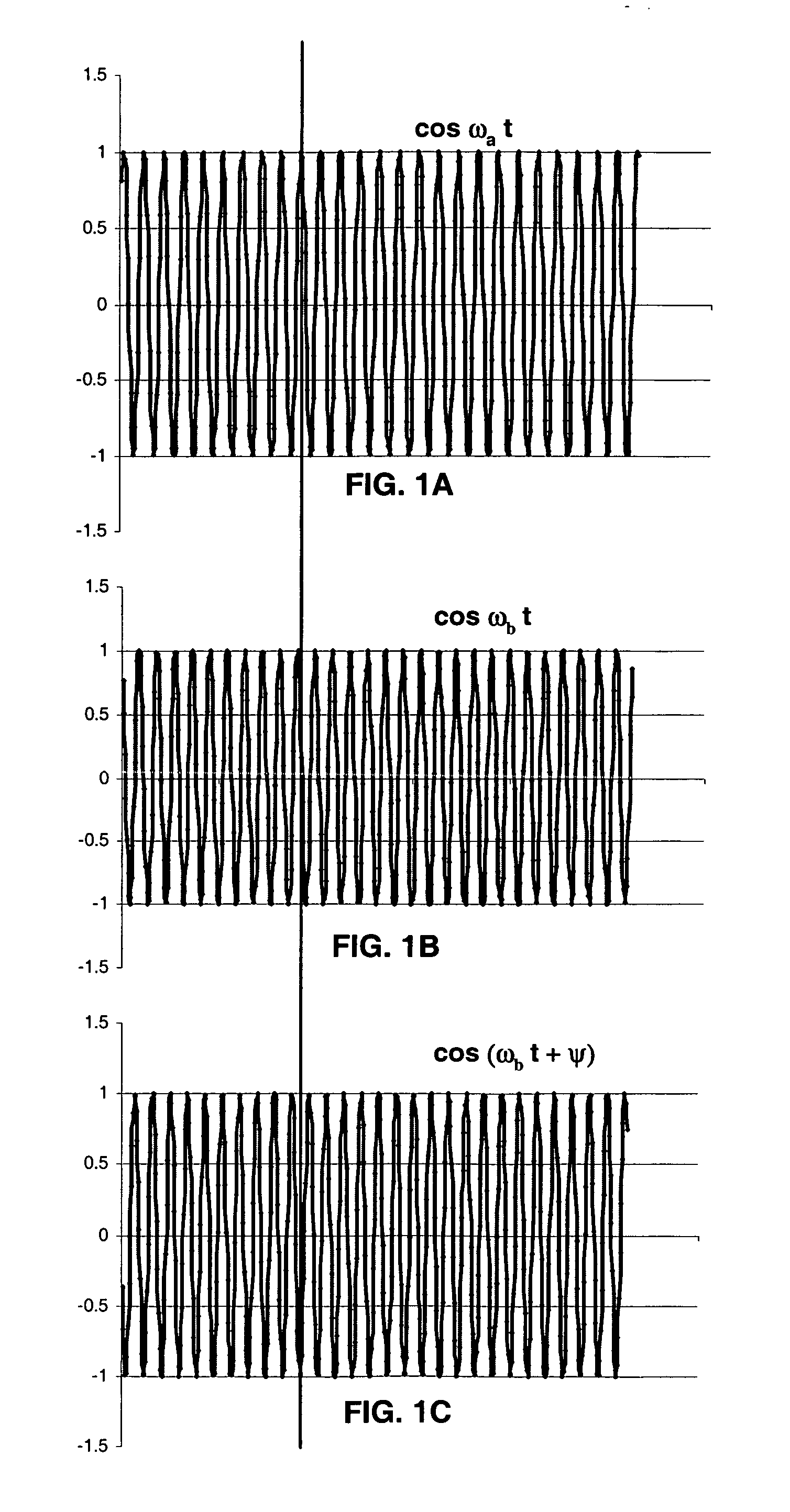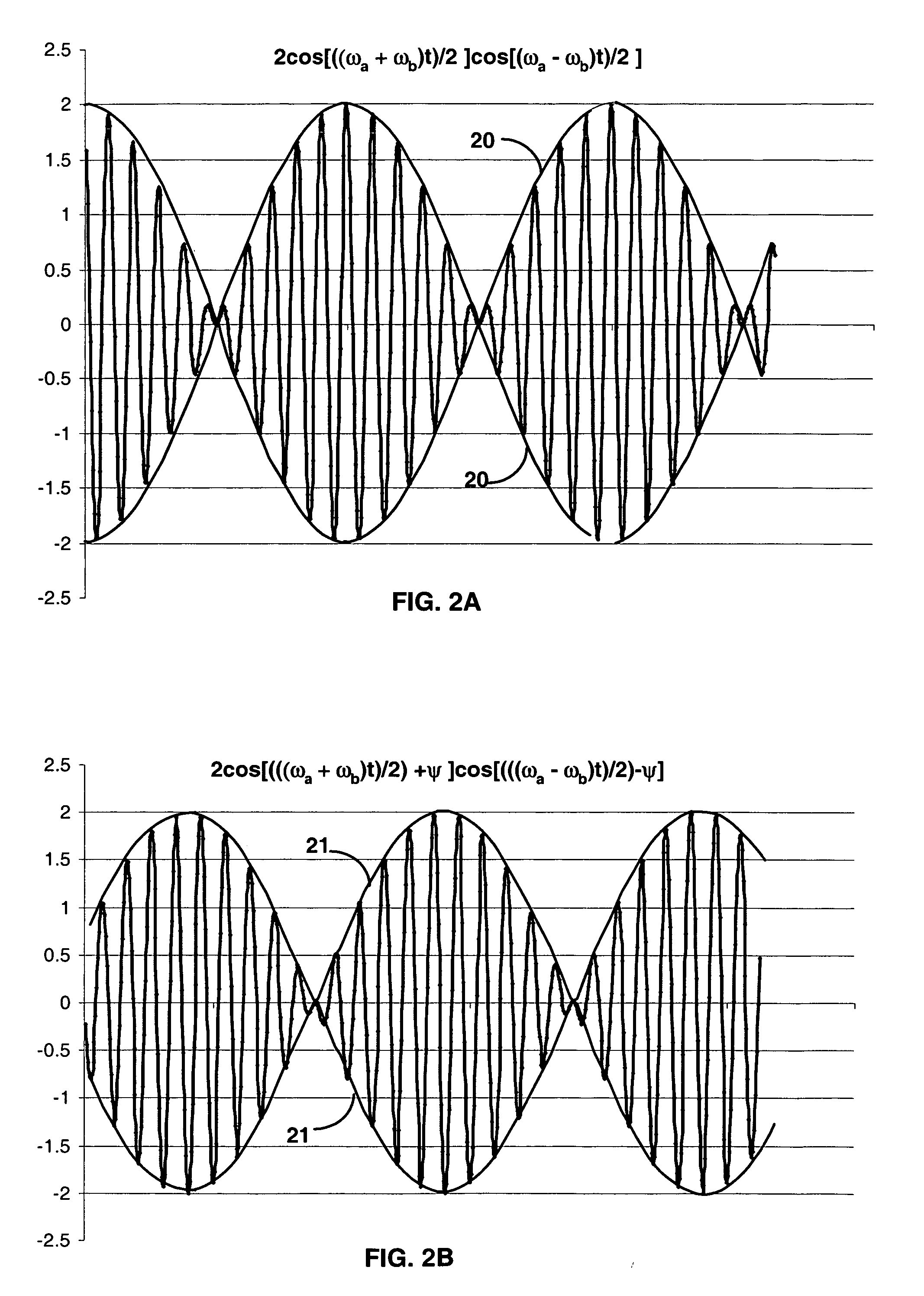System and method for determining the bearing of a source location from a receiver location
a technology of source location and receiver location, applied in the field of system and method for determining the bearing of a source location from a receiver location, can solve the problem of increasing the danger of the soldier and achieve the effect of reducing the ambiguity
- Summary
- Abstract
- Description
- Claims
- Application Information
AI Technical Summary
Benefits of technology
Problems solved by technology
Method used
Image
Examples
first embodiment
[0055] The receiver is provided with information indicating the phase relationship between the beatable signals as transmitted and the phase reference signal, the positional relationship between or among the signal sources at the source location, and other system conditions. Each beatable signal propagates along a respective signal path extending from the respective beatable signal source to the receiver. The beatable signals are received at the receiver. The receiver sums the beatable signal to form a sum signal that includes a beat signal component, and demodulates the sum signal to extract the beat signal component as a beat signal. The phase of the beat signal depends on the difference in the respective path lengths between the beatable signal sources and the receiver. The phase of the beat signal additionally depends on other system conditions, as will be described below. The receiver measures the phase difference between the beat signal and either the phase reference signal or...
second embodiment
[0100] In a system based on system 10 for determining the bearing of source location 32 from receiver location 34 in accordance with the invention, the phase reference signal is single-frequency signal having a frequency ωTS equal to one half of the frequency difference Δωbetween the first frequency ω1 of the first beatable signal and the second frequency ω2 of the second beatable signal, i.e., ωTS=Δω / 2=(ω1−ω2) / 2. Phase reference signal source 80 transmits such phase reference signal directly. Since the phase reference signal is transmitted directly, receiver 100 does not subject the received phase reference signal to demodulation.
third embodiment
[0101]FIG. 6A is a schematic drawing showing a system 11 for determining the bearing of source location 32 from receiver location 34 in accordance with the invention. In system 11, located at source location 32 are first beatable signal source 30 and second beatable signal source 50 as described above with reference FIG. 5A. Additionally located at source location 32 is phase reference signal source 80. However, the positional relationship among first beatable signal source 30, second beatable signal source 50, phase reference signal source 80 in system 11 differs from that in system 10 described above with reference to FIG. 5A in that phase reference signal source 80 and first beatable signal source 30 are collocated at the first position. The second beatable signal source is spatially offset from the first beatable signal source and the phase reference signal source by distance S in first reference direction RD1. First beatable signal source 30, second beatable signal source 50, a...
PUM
 Login to View More
Login to View More Abstract
Description
Claims
Application Information
 Login to View More
Login to View More - R&D
- Intellectual Property
- Life Sciences
- Materials
- Tech Scout
- Unparalleled Data Quality
- Higher Quality Content
- 60% Fewer Hallucinations
Browse by: Latest US Patents, China's latest patents, Technical Efficacy Thesaurus, Application Domain, Technology Topic, Popular Technical Reports.
© 2025 PatSnap. All rights reserved.Legal|Privacy policy|Modern Slavery Act Transparency Statement|Sitemap|About US| Contact US: help@patsnap.com



